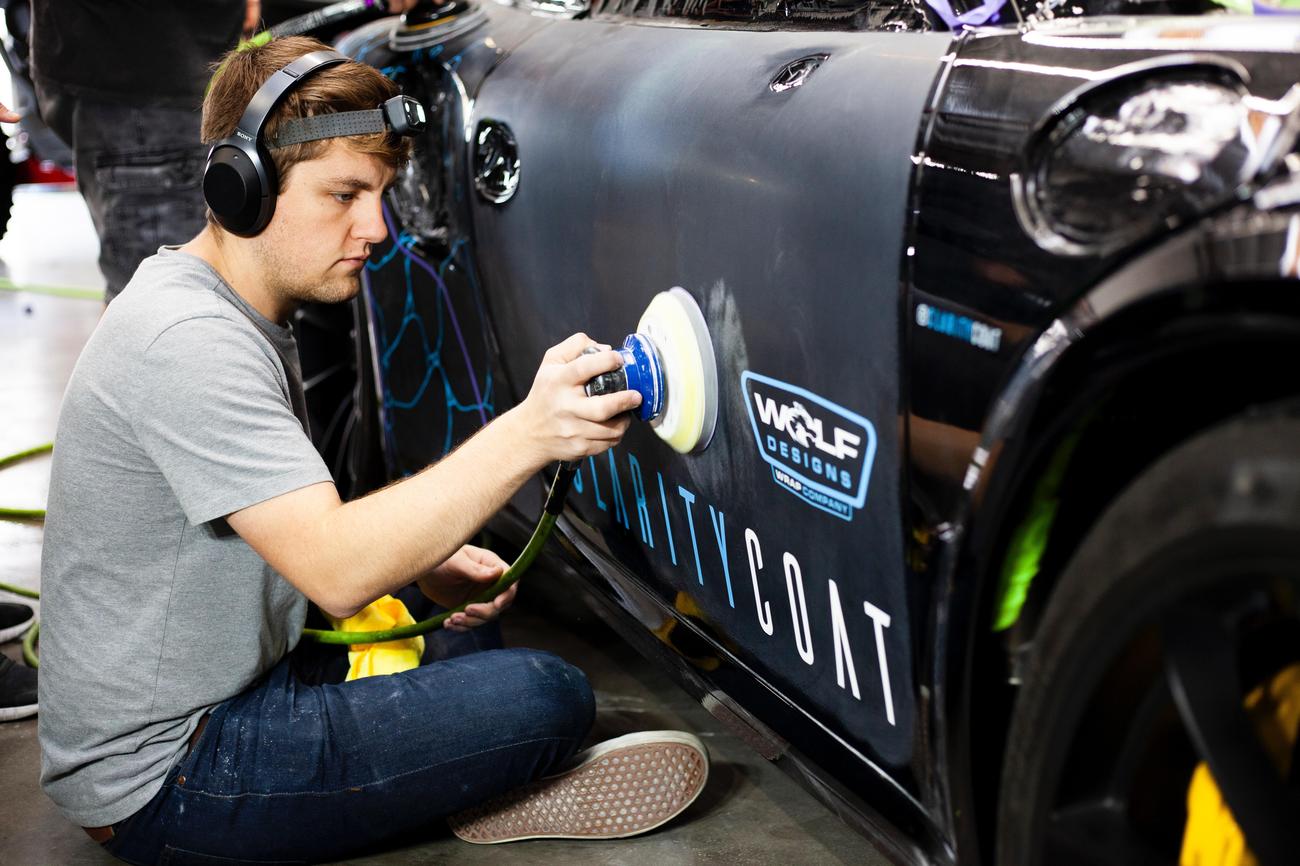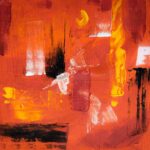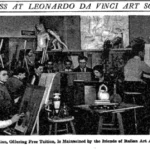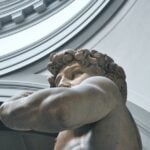Are you ready to dive into the fascinating world of art and discover the hidden gems of renowned painters? In this article, we will embark on a journey through time and unveil some of the most intriguing and entertaining fun facts about painters. From the eccentric habits of famous artists to the surprising tales behind their masterpieces, get ready to be captivated by the captivating stories and lesser-known tidbits that make the art world truly extraordinary. So grab your paintbrush and let’s explore the colorful and enchanting world of fun facts about painters!

Fun Facts About Painters
Leonardo da Vinci, widely regarded as one of the most influential artists of all time, had a surprising dietary preference – he was a vegetarian. This fact not only adds a layer of intrigue to his character, but it also sheds light on his views on the treatment of animals and his dedication to leading a compassionate lifestyle. It’s fascinating to think that even centuries ago, artists like Leonardo were conscious of their impact on the world around them.
Now, let’s turn our attention to the eccentric Salvador Dali. Known for his surrealist masterpieces, Dali had a penchant for shocking people. In one particular instance, he showed up for an exhibition wearing a full diving suit. This unconventional outfit choice perfectly captures Dali’s desire to push boundaries and challenge societal norms. It’s moments like these that remind us of the whimsical and enigmatic nature of the art world.
Moving on to Pablo Picasso, a name that needs no introduction. While Picasso is celebrated today as one of the greatest painters of the 20th century, it’s hard to imagine that he experienced extreme poverty in his youth. In fact, he once had to burn his own paintings for firewood because he couldn’t afford any other source of heat. This anecdote highlights the struggles and sacrifices that artists often endure in pursuit of their craft. It’s a powerful reminder that even the most revered figures in art history faced their own share of hardships.
Did you know that as early as 1502, painters recognized the importance of collective bargaining? The Worshipful Company of Painters-Stainers, formed in London, became the world’s first painters’ union. This establishment has played a crucial role in advocating for painters’ rights and promoting their craft throughout history. It’s remarkable to see how the union’s legacy continues to shape the profession to this day.
Beyond the intrigue of the artists themselves, let’s not forget the physical demands that painting entails. Whether it’s bending over a canvas, kneeling to reach lower sections, or even climbing ladders to tackle larger works, painting is a physically demanding art form. Artists often endure these physical challenges to bring their visions to life. It’s a reminder that art is not only a creative endeavor but also a labor-intensive one.
Lastly, let’s take a step back and appreciate the rich history of painting. The practice of creating visual art spans back thousands of years, with evidence of painting dating as far back as 30,000 years. From ancient cave paintings to the iconic works of the Renaissance and beyond, painting has evolved and flourished throughout human civilization. It’s a testament to the enduring power and universal appeal of this expressive medium.
As we delve into the world of painting, these fun facts about renowned painters provide us with a deeper understanding and appreciation for their artistry. From Leonardo da Vinci’s vegetarianism to Salvador Dali’s eccentricity, Pablo Picasso’s humble beginnings to the formation of painters’ unions, and the physically demanding nature of painting to its rich history spanning millennia – each tidbit unveils a different aspect of the art world. These stories inspire us to see paintings not only as beautiful masterpieces but also as windows into the lives and experiences of the artists behind them.
“Through these fascinating anecdotes, we peel back the layers of paint and uncover the captivating stories hidden beneath.”
Painting is an art form that has captivated humanity for centuries. Whether you are an art enthusiast or just curious about the creative process, there are fascinating facts about painting that will leave you in awe. Did you know that the oldest known painting in the world is around 40,000 years old? It’s incredible to think that humans have been expressing themselves through artwork for so long. If you’re interested in learning more about the history, techniques, and famous artists behind this timeless form of expression, check out our collection of facts about painting at facts about painting. Prepare to be amazed as you delve into the colorful world of art!
Fun Facts About Painters
Did you know that painting has a rich history dating back centuries? There are so many fascinating aspects to explore in the world of art. If you’re looking for fun facts about painting, you’ve come to the right place! From intriguing techniques to remarkable stories, there’s something here for everyone.
One of the most interesting facts about painters is that each artist has their own unique style and approach. Whether it’s the use of bold colors, intricate brushwork, or imaginative subject matter, painters bring their own creative flair to the canvas. You can discover more about these captivating techniques in our article on fun facts about painting.
If you’re curious about the individuals behind these masterpieces, you’re in for a treat. There are countless intriguing stories about painters throughout history. From Van Gogh’s eccentricities to Da Vinci’s enigmatic smile, each artist has left their mark on the world. Learn more about the fascinating lives of these visionary individuals in our article on interesting facts about painters.
Another aspect that makes the world of painting so captivating is the influence of famous painters on today’s art scene. The works of legendary artists continue to inspire and leave a lasting impact on contemporary art. Discover some amazing facts about these famous painters and their contributions to the art world in our article on amazing facts about famous painters.
So, whether you’re a seasoned art enthusiast or just starting to dip your toes into the world of painting, there’s a treasure trove of knowledge waiting for you. Click on the links above to delve deeper into the captivating world of art and discover fun facts about painting and the remarkable painters who have shaped it. Happy exploring!
Artists and the Paradox of Discontentment
[youtube v=”xm7awfl6hYA”]
Introduction: Why Artists Are Never Happy
The Paradox of Discontentment in Creativity
Creativity has always had a touch of magic to it. We’ve all marveled at stories of writers whose ideas flow effortlessly, or film directors who bring out incredible performances with a single word. These moments seem to be born out of spontaneous inspiration and gleeful creativity. However, what if I told you that behind every great idea lies a sense of discontentment?
The Role of Discontentment in Creative Pursuits
We often overlook the fact that these moments of creative magic are often preceded by critical self-assessment. Take the example of a director who elicits a brilliant performance from an actor. It all starts with the director acknowledging that the previous take wasn’t good enough and pushing for improvement. Similarly, writers experience bursts of inspiration, but only after meticulously rewriting their stories, laboring over each phrase.
Modified Perfectionism and Its Impact on Artists
What we’re dealing with here is a form of modified perfectionism, where artists refuse to accept anything short of near-perfection. This constant state of discontentment can be both a blessing and a curse. On one hand, it drives artists to strive for excellence and constantly push their boundaries. On the other hand, it can lead to self-doubt and an inability to appreciate their own work.
The Challenges of Modified Perfectionism
Living with this level of perfectionism isn’t easy. Artists often find it challenging to put their work out there, fearing judgment and rejection. They may struggle with deadlines and work-life balance. Accepting compliments becomes difficult as they are too busy agreeing with their critics. It’s a relentless pursuit of improvement that drains their energy and leaves them emotionally vulnerable.
Embracing Discontentment: The Alternative Path
While it may seem tempting to give in to contentment and settle for mediocrity, true artists choose the path less traveled. They say, “That’s still not good enough,” and continue on their journey of self-discovery and growth. This path is filled with risks, fears, doubts, and exhaustion, but it also brings with it moments of thrill and triumph.
The Need for Conflict and Self-Reflection
Just as stories need conflict to captivate and engage us, artists must embrace the conflicts within themselves. By constantly seeking improvement and acknowledging their own inadequacies, they uncover hidden depths and eventually find the magic they’ve been searching for.
Conclusion: Discontentment as the Key to Creative Success
Being an artist means living in a perpetual state of discontentment. It’s about learning to use that discontentment as fuel for growth and creativity. The journey is challenging, but it is through this ongoing struggle that artists continue to evolve and produce work that resonates with others.
“The people who feel the sting of their own inadequacies and then keep working at it are the ones who eventually find the magic.”
FAQ
Q: Were there any famous painters who had unconventional lifestyles?
A: Yes, there are several famous painters who had unconventional lifestyles. For example, Salvador Dali loved to shock people and once showed up for an exhibition in a diving suit. Leonardo da Vinci was also known for his vegetarian lifestyle.
Q: How did Pablo Picasso manage his poverty during his youth?
A: Pablo Picasso was very poor in his youth and had to find creative ways to survive. In one instance, he had to burn the stove with his own paintings because he did not have money for firewood.
Q: When was the first painters’ union formed and what was it called?
A: The first painters’ union was formed in London in 1502 and was called the Worshipful Company of Painters-Stainers.
Q: Is painting physically demanding?
A: Yes, painting is physically demanding. It requires a lot of bending, kneeling, reaching, and climbing, especially when painting large surfaces or working on murals.
Q: How long has painting been practiced?
A: Painting has been practiced for as long as 30,000 years. It is one of the oldest forms of human expression and has been used to communicate and record history since ancient times.
- Star Ring Trends: Etsy vs Amazon - March 28, 2025
- Boost Pollinator Habitats: Baby Blue Eyes Sustainable Farming Guide - March 28, 2025
- Protect Big Black Bears: Effective Conservation Strategies - March 28, 2025
















